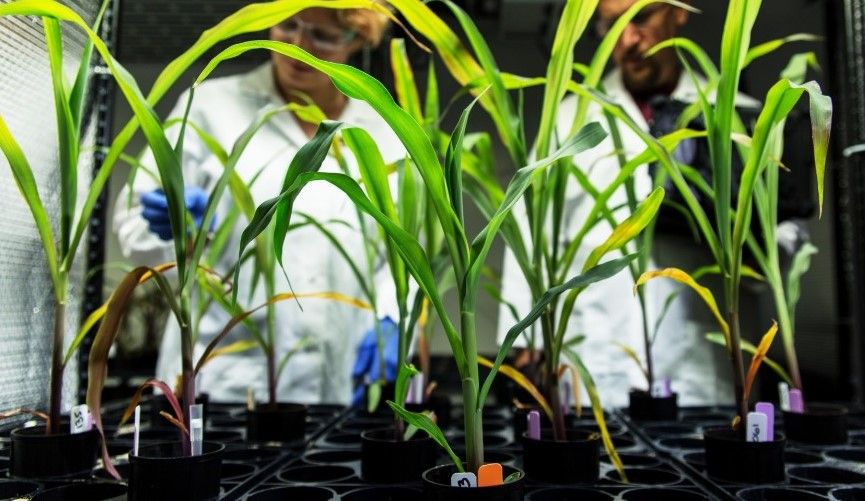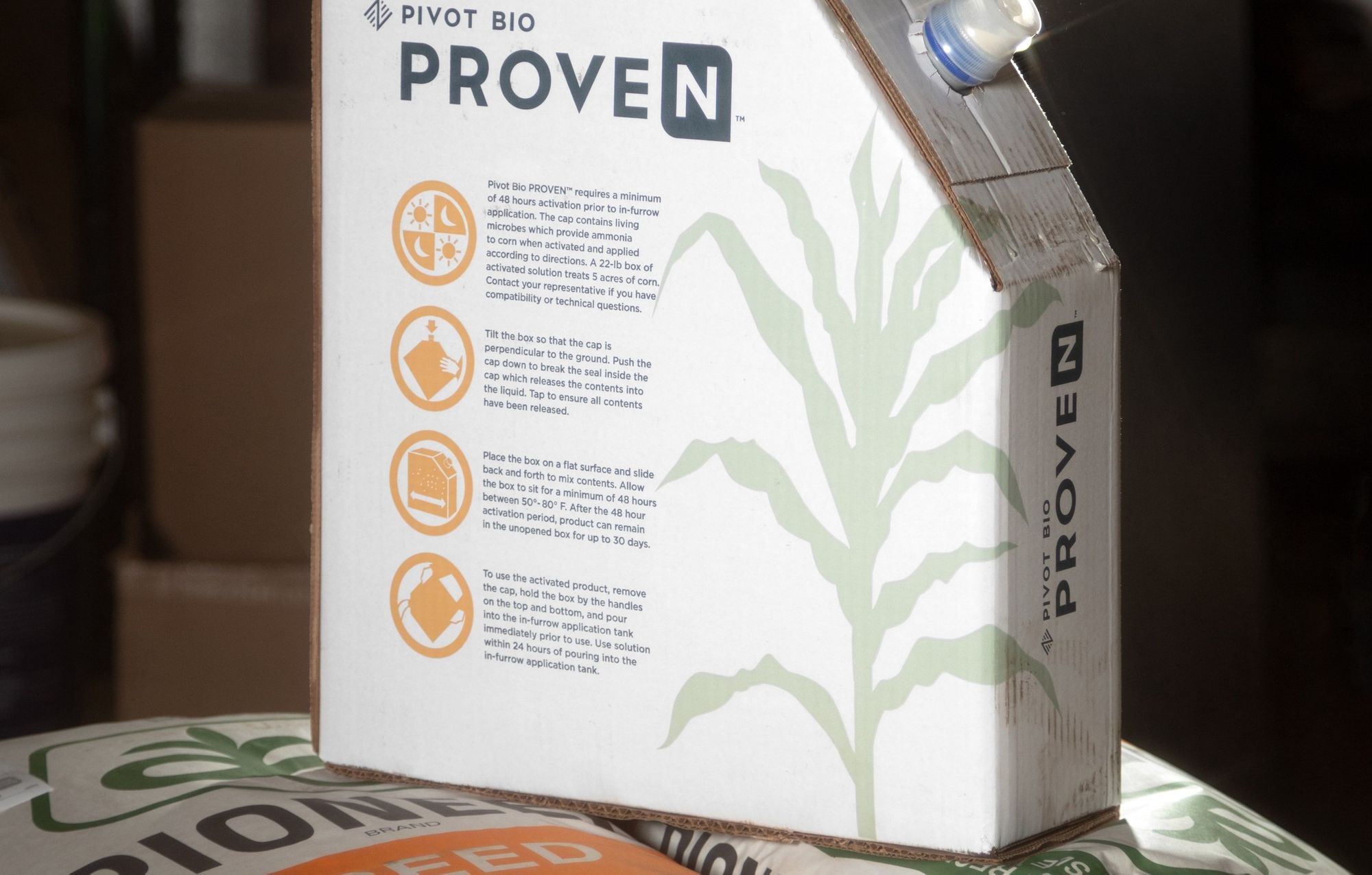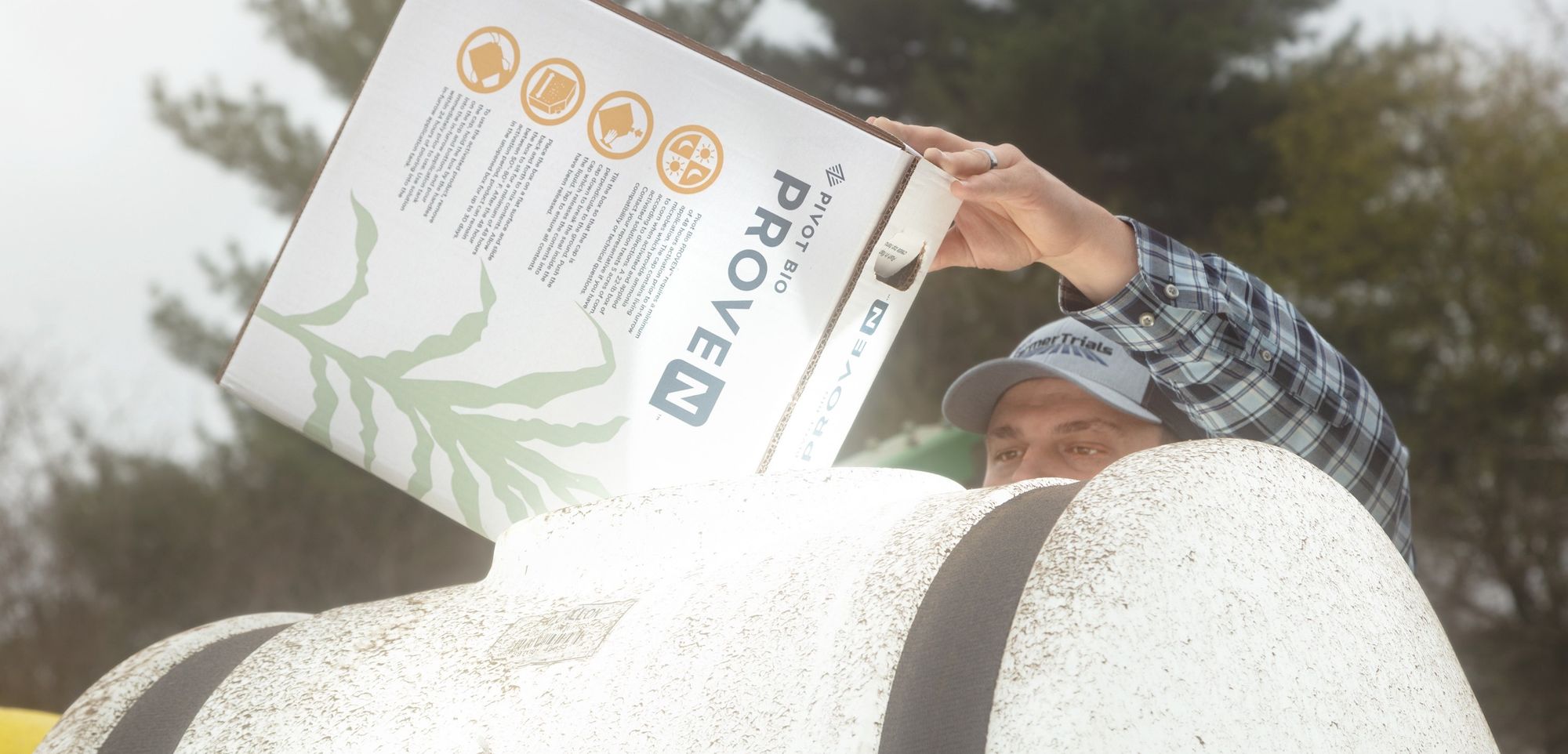With an almost $90-million investment into the breakthrough technology of designer microbes for biofertilizers, Karsten Temme, co-founder of the start-up Pivot Bio, hopes to turn the fertilizer industry on its head.
“We’re trying to create an ecological zeitgeist or spirit of the age,” says Temme.
However, he is also very aware that any new fertilizer product, bio or synthetic, will only work if it is more effective and gives a better return on investment than conventional methods.
Here is the second part of how these biofertilizers were created, the results they achieved, and what impact they will have on the fertilizer industry.
To learn more about the inspiration behind the latest biofertilizer products, read The Story of How Biofertilizers for Corn Went Commercial part 1.
Finding the right microbes was the first challenge, as a report by the technology journal Wired explains, “To start, Pivot bought buckets of soil from farmers throughout the US corn belt. Into that soil, the company’s scientists planted young corn seedlings called ‘bait plants’ because of the substances they excrete to attract beneficial bacteria. Think of it like agricultural Tinder; the corn swipes right on microbes that make its life easier. Out of thousands of bugs that might be in the soil, the plant pulls out maybe a dozen or so. Then Pivot’s scientists grind up the roots and dab the mixture onto a plate of agar devoid of nitrogen. Anything that survives must be making its own.”

Once the company had sufficient candidates, the research team could begin experimenting with gene editing tools to find the best way to get the microbes to reignite their nitrogen-fixing ability, even when in living in nitrogen rich soil, such as a fertilized field.
“We’ll take a promising strain and remodel it 100 different ways and test all those approaches to see which one is best,” says Pivot scientist and farmer’s daughter, Sarah Bloch. “A lot of our early samples came from people we know - friends and family, [and] it just turned out that we hit the jackpot on my dad’s sample.”
Early results have been positive, and more importantly, the data gleaned so far shows that biofertilizers can be profitable. As Forbes magazine reports, “In February 2019, Pivot Bio issued a report citing that its nitrogen-producing microbe for corn had a better ROI and superior harvesting yields. The data was based on research trials from 11,000 farms across multiple states in 2018. The farms were identified by a third party, called IN10T, that worked with the growers to gather harvest performance data from each of the farms.”
Adding that, “Even in challenging soil types, their nitrogen-producing microbes had a close to a 17 bushel per acre average advantage against comparable fields using only chemical nitrogen fertilizer.”
An improved crop yield based on the natural, symbiotic relationship between plants and microbes. The microbes adhere to the plant’s roots, giving it a daily dose of nitrogen in return for a small amount of energy. A win-win situation, especially given that no excess nitrogen is produced, so there are no negative environmental effects.
“Growers are confident the nitrogen they put down via Pivot Bio microbes stays with the corn plant, feeding it through the plant’s life cycle. And, they stop wasting money on chemical nitrogen since they know that half of it never reaches the plant,” says Temme. “Based on conservative calculations from the 2018 results of the trials on the 11,000 farms, the corn farmers using our biological microbial product over chemical fertilizers expands to just 35 percent of the U.S. corn market which is nearly 20,000 metric tons of nitrous oxide emissions that could be reduced or prevented - and that is equivalent to taking nearly 1.5 million cars off the road.”
All that is needed now is to make the biofertilizer product a success on the market. But changing farmer’s habits away from their tried and trusted conventional fertilizers is not straight-forward.
“A synthetic nitrogen fertilizer, you put it in, and it works every time,” says Jake Misch who runs a family farm in northwest Indiana. "It’s a very repeatable thing.”

Misch, however, has been quick to lead the way in biofertilizer because he believes it will save him money. His yearly corn yield is anywhere between 170 and 240 bushels per acre (one bushel is about 25 kilos). The value of a bushel of corn fluctuates greatly throughout the year, but he can expect to earn just $4.25 for each bushel he can grow. 2019/20 price predictions are for as little as $4. The planting cost of $600 per acre, means that Misch needs to make at least $750 per acre to keep the operation profitable.
At present, he spends about $90,000 per year on nitrogen fertilizer. This cost can increase if there are heavy rains after the fertilizer has been applied, when the rain washes the fertilizer out of the soil. To maintain adequate yields means adding more fertilizer, hurting both his bank balance and the environment.
As Misch states, “There really are no regulations on how to use synthetic fertilizers. Most farmers are trying to be good managers of it. It’s just that Mother Nature doesn’t always cooperate.”
As Bio Pivot has only just entered the market, there is limited data on the bottom-line profitability of biofertilizers, although laboratory tests, field trials, and theoretical calculations have all given positive results.
As the online tech-journal Wired reports, “[Pivot Bio’s nitrogen-producing microbial treatment for US corn] product was tested in five generations of small field trials before going into larger trials this summer. Pivot worked with twenty-five farmers across the US to each grow a few acres using the liquid probiotic treatment. The harvest has yet to come in, and the data with it, but farmers are already excited… The way numbers crunch means that using this kind of probiotic plant treatment could save $20 an acre, or about a third of the typical annual nitrogen investment.”
At present, Pivot Bio’s product is not meant as a full replacement. Instead it is intended to work as a supplement, allowing for a reduction in nitrogen fertilizer. Something the company believes could prevent up to 500,000 metric tons of nitrates leaching into waterways.

In addition to waiting for the full harvest results, there is also a great sense of entering the unknown for many working in this sector of the fertilizer industry. Crop supplements made of designer microbes are so innovative, that no one can be certain whether it will spell the end of chemical fertilizers or if it will lead to other unintended consequences.
“Hopefully adding microbes to the soil that weren’t there previously won’t have harmful side effects,” says Susan Fisk, director of science communications at the Crop Science Society of America. “Putting the microbes in the soil also doesn’t assure that they will work cooperatively with the plants, or that the form of nitrogen is ‘digestible,’ if you will, by the plant.”

However, Fisk is quick to acknowledge the environmental advantages of biofertilizers on a global scale. Given the energy-intensive process of making nitrogen fertilizer in chemical factories, biofertilizers hold great potential for combating climate change. The size of the conventional fertilizer industry (currently worth $155 billion) means that small start ups and biofertilizer suppliers won’t change the industry overnight, but it is a move in the right direction.
For now, how well designer microbes as a biofertilizer will fare, is a story for another day.
Photo credit: Geneticliteracy, Wired, Megsduerken, Youtube, Grist, LiveScience, ScienceSocieties, Grist, CropscienceBayer& Onezero
